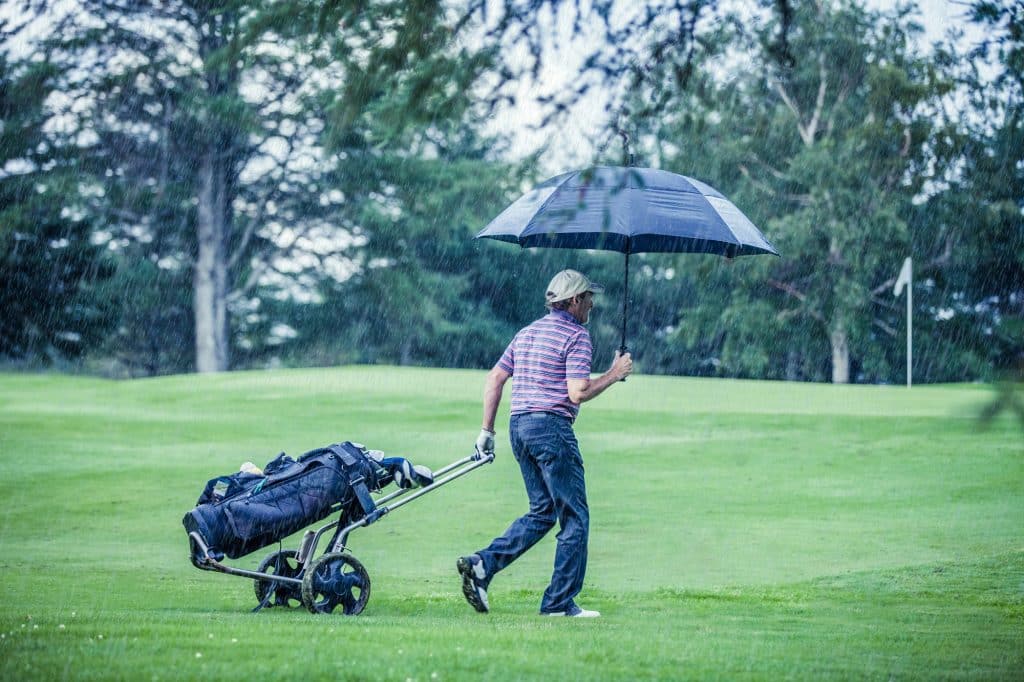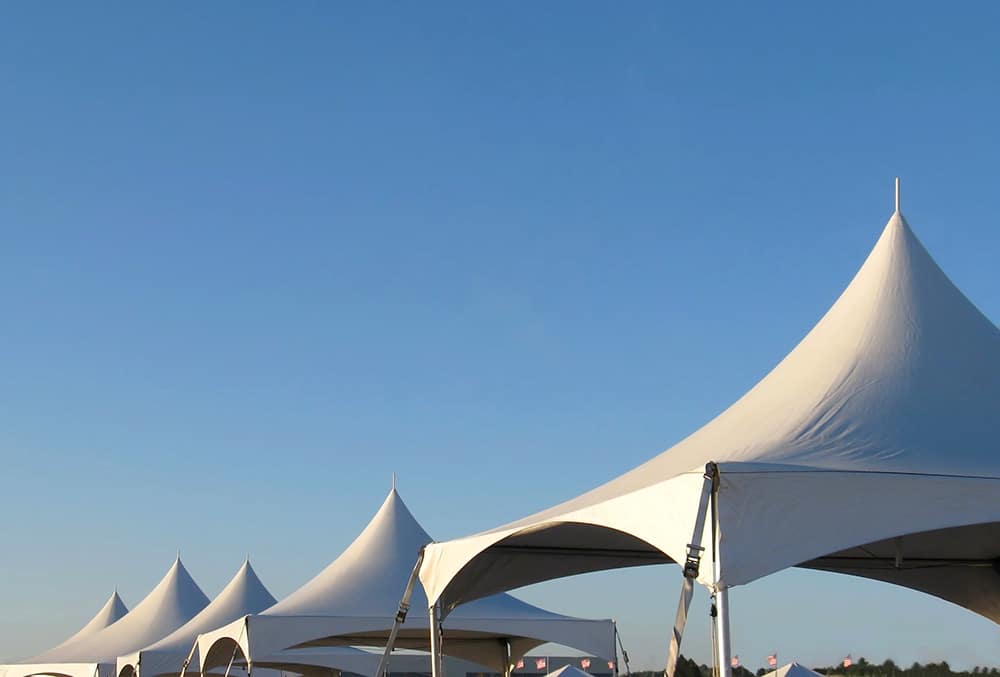Organizing an outdoor event such as a fair, festival, or concert can be exciting and profitable—but it also comes with unique challenges. Weather is one of the biggest wild cards, with the potential to cause substantial financial losses, property damage, and even bodily harm to attendees. Below, we explore strategies and best practices to help you safeguard your event from unpredictable weather while ensuring a smooth, enjoyable experience for everyone involved.
Conduct a Thorough Risk Assessment

- Regional Factors: The type of weather event you’re most likely to face varies by location. Coastal regions deal with hurricanes, the Midwest is prone to tornadoes, and mountainous or northern regions must plan for sudden cold snaps or heavy rain.
- Seasonal Patterns: Check historical data and trends for the time of year you plan to host your event. This can help you anticipate common risks such as peak hurricane season or frequent afternoon thunderstorms.
Evaluate Your Event Layout
- Terrain: Determine if your venue is prone to flooding, high winds, or mudslides when heavy rain strikes.
- Structures: Assess permanent or temporary structures (e.g., stages, tents, booths) that could be compromised by strong winds or heavy downpours.
By understanding these environmental factors, you can tailor your preparation efforts and protect your budget from unforeseen expenses.
Prioritize Financial Protection
Purchase the Right Insurance
- Event Cancellation Insurance: If severe weather forces you to cancel or postpone, event cancellation insurance can cover sunk costs like permits, venue fees, and some vendor payments.
- Event Rain Insurance: Rain insurance provides protection against various financial setbacks caused by unfavorable weather, such as event cancellations, income disruptions, and additional costs resulting from rescheduling.
- Liability Coverage: Protect yourself from lawsuits or medical bills if attendees are injured due to weather-related incidents—such as slipping on wet surfaces or being struck by flying debris.
- Property Insurance: Ensure your equipment, rented structures (e.g., tents), and vendor booths are covered for damages caused by wind, hail, or rain.

- Contingency Fund: Create a separate line item in your budget for weather-related costs, such as additional security, last-minute tent rentals, or cleanup and repair fees.
- Refund Policies: If you plan to offer ticket refunds or credits in the case of weather disruptions, build that into your financial modeling.
Contractual Agreements
- Force Majeure Clauses: Work with legal counsel to ensure vendor and sponsor contracts include provisions for major weather events.
- Vendor Insurance Requirements: Require all vendors to carry insurance that includes weather-related property damage and liability coverage, so their losses don’t become your financial burden.
By taking a proactive approach to financial protection, you’ll be in a much stronger position to handle surprises and shield your bottom line from weather-related setbacks.
Implement Robust Physical Safeguards
Invest in High-Quality Structures
- Tents & Temporary Buildings: Choose sturdy tents rated for high winds and heavy rain. Properly anchor each structure with weighted or staked systems that meet local regulations.
- Stage Reinforcements: If hosting performances, invest in stable stage systems designed to withstand wind shear. Install wind walls or scrims to protect performers and equipment.
Plan for Drainage and Flooding
- Elevated Platforms: Use pallets or risers to keep electronics, electrical connections, and sensitive materials off ground level.
- Drainage Channels: Set up temporary drainage solutions to direct rainwater away from walkways and gathering areas.
Lightning and Wind Safety
- Lightning Protection: For large events, consider lightning rods or grounding systems on main structures. Have an evacuation or shelter plan ready if lightning is reported nearby.
- Wind Monitoring: Install wind meters or rely on reputable forecasting and alert systems. If winds exceed a certain threshold (often 25–30 mph for many large tents), consider pausing or shutting down activities.
High-quality physical safeguards not only protect your financial investment but also reduce the risk of injuries and costly repairs.
Develop a Comprehensive Contingency Plan
Create a Weather Monitoring System
- Real-Time Alerts: Designate a staff member or hire a weather professional to monitor conditions through apps, radar, or local alerts.
- Communication Protocol: Establish how and when to alert vendors, attendees, and staff of impending severe weather. Use text, email, PA announcements, or social media updates.

- Safe Zones: Identify onsite or nearby shelters (like solid buildings, parking garages, or designated storm-ready areas) where attendees can wait out severe weather.
- Emergency Exits: Ensure all exits are clearly marked, well lit, and free from obstructions. Conduct drills or at least walk-throughs with event staff so everyone knows the protocol.
Staffing and Resource Allocation
- Trained Crew: Train event staff, volunteers, and security personnel on emergency procedures, including how to handle crowd control during a storm.
- Command Center: Establish a central command center where key decision-makers gather to monitor weather, make announcements, and coordinate the response.
A contingency plan is vital for addressing emergencies efficiently. It also demonstrates professionalism and concern for attendee welfare, which can preserve your reputation and minimize legal or financial fallout.
Prioritize Attendee & Staff Safety
Clear Warnings and Signage
- Inform Attendees: Post signs about potential weather risks, recommended shelter locations, and emergency contact numbers.
- Medical Preparedness: Have first-aid stations and medical personnel onsite in case of weather-related injuries (e.g., heatstroke, slips, or dehydration).
Crowd Management
- Mobile Alerts: Encourage attendees to opt in for real-time push notifications. In a weather emergency, you can instantly communicate critical instructions.
- Controlled Exits: If you must evacuate, do so in a controlled, systematic manner to avoid panic or bottlenecks. Trained staff should guide attendees to safer locations.
Heat and Cold Stress Precautions
- Hydration & Shade: For hot climates, provide shaded rest areas, free water stations, and reminders to stay hydrated.
- Warming Stations: If hosting events in colder months, consider heaters or windbreaks to protect against hypothermia or frostbite.
Ensuring your attendees and staff feel safe and well-supported reflects your dedication to risk mitigation—further protecting your event’s reputation and finances.
Handle the Aftermath Strategically
Damage Control and Cleanup
- Immediate Action: Once the storm passes, quickly assess the site for hazards like exposed electrical wires, fallen branches, or standing water.
- Documentation: Take photos or video of any damage for insurance claims. Gather witness statements if there are injuries or property damage involving attendees or vendors.
Financial Recovery
- Insurance Claims: File claims promptly, following your insurer’s procedures for faster processing.
- Vendor Reconciliation: Work with vendors to determine responsibilities and costs for damaged equipment or merchandise.
- Reputation Management: Communicate openly with attendees and sponsors about any disruptions, explaining how you handled the situation and showing empathy for any inconvenience.
A well-executed response can preserve your relationships with sponsors, vendors, and the public, helping your event brand remain strong.
Continuous Improvement
Debrief with Your Team
- Post-Event Analysis: Hold a meeting to discuss what went well and what needs improvement. Review your contingency plan’s effectiveness and any gaps that emerged.
- Feedback Loop: Collect feedback from attendees, vendors, and staff to identify additional areas for improvement.
Update Your Plans and Protocols
- Refine Your Process: Integrate any lessons learned into the next iteration of your risk management plan.
- Stay Informed: Monitor industry best practices, shifting weather patterns, and advancements in event safety technology.
Each event offers valuable insights. By continually refining your strategies, you’ll bolster your organization’s reputation as a safe, responsible event planner—and protect your bottom line in the long run.
Final Thoughts
Adverse weather can be a major disruptor for outdoor events, leading to financial losses, property damage, and potential injuries. However, with thorough planning, the right insurance, strong communication protocols, and physical safeguards in place, you can significantly reduce these risks. By prioritizing both attendee safety and financial protection, you ensure not only the success of your current event but also the continued trust and loyalty of your patrons, sponsors, and community for future events.
Remember: the best defense against unpredictable weather is preparation, proactive planning, and a commitment to continuous improvement. When storms roll in, you’ll be ready to keep the fun going while safeguarding every aspect of your outdoor event.
If insurance is in place, whether or not or to what extent a particular loss is covered depends on the facts and circumstances of the loss and the language of the policies as issued. Actual coverage is subject to the language of the policies as issued. Policy benefits vary by carrier.

